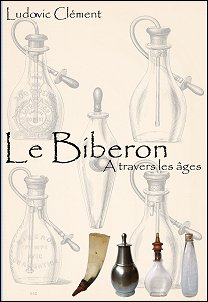![]()
|
|
For full colors version 2012 (US letter format hardcover) please contact me : contact
__________________________________________________________________________
|
First edition 2010 Black & white : Out of stock |
Full colors version 2012 : Out of stock |
||
|
|
Details :
A5 format (14.80 x 21.00 cm - 5.83" x 8.26") Softcover full color Perfect bound 140 pages with black and white illustrations + 14 pages portfolio Census glass bottles from 1820 to 1920 with patent number and year of filing Bibliography For the normal circulation: integrated portfolio of 14 images in the book full page B & W Head of Circulation (20 copies): portfolio 10 color photos in an envelope |
Details :
US letter format (21.60 x 27.90 cm - 8,50" x 11") Hardtcover full color 124 pages with full color illustrations Census glass bottles from 1820 to 1920 with patent number and year of filing (2012 uddate) Bibliography (2012 uddate) Head of Circulation (10 copies numbered and signed x/10): 150 pages with a full color portfolio |
|
|
Out of stock |
Out of stock |
||
|
An American Book Review There are currently not many books about infant feeders or baby bottles, to use the more popular term, on the market. Of course there is our own Guide to American Nursing Bottles first edited by Diane Ostrander (1984) and revised by Don Gifford (1992) and Frank & Sara Jean Binder (2001), and there is also a most informative article by Charlie Harris about Callet nursing bottles (Keeping Abreast, 33:4, 25-28), but if one checks the websites of book retailers, it is nearly impossible to find a reasonably priced volume still in print. The situation is different in France where at least two professionally edited volumes about the history of baby bottles are available and can also be delivered to the United States: a richly illustrated overview called "Bébés au biberon" (Babies with Baby Bottles) by Marie-Claude Delahaye (Paris: Editions Hoëbeke, 2003) and just off the press "LeBiberon. A travers les âges" (The Infant Feeder Through the Ages) by Ludovic Clément who is also the editor and owner of currently perhaps the best website on the subject, http://www.histoire-du-biberon.com. While the first-mentioned volume is a wonderful picture book presenting historically fascinating art work and photo material, especially commercial advertisements, the newly released volume is a concise and superbly edited guide book for the collector. It offers a chronological review of the development of this nursing container from the days when France was a Roman colony to contemporary bottle designs with silicone nipples. The paperback volume also contains numerous illustrations and black-and-white photos, a list of French bottle companies, an excellent bibliography, and a listing of websites and museums. Of course the text is all in French, but the illustrations make clear what the text describes. Since much of the development of this liquid-feeding device is internationally similar (at least in countries of Western civilization), a comparison with American products is not difficult. From an artistic though not sanitary aspect, the most fascinating biberons (derived from the Latin verb bibere = to drink) of the 19th century are probably the richly decorated glass bottles, particularly of the Robert company first located in Dijon, then Paris (one still comes across such culturally relevant collectibles on Ebay auctions). Collectors certainly also appreciate the polished pewter bottles from the early 19th century, real works of art and also documented in Clément’s outline. If I may make a suggestion to the prospective reader: Don’t just consult the print medium (whether you speak French or not), but check also the above-mentioned website which is a treasure trove of information and a colorful supplement to the book. And don’t worry about the language barrier - you’ll find your way through !
Gert Niers, Ph.D. |
|||


